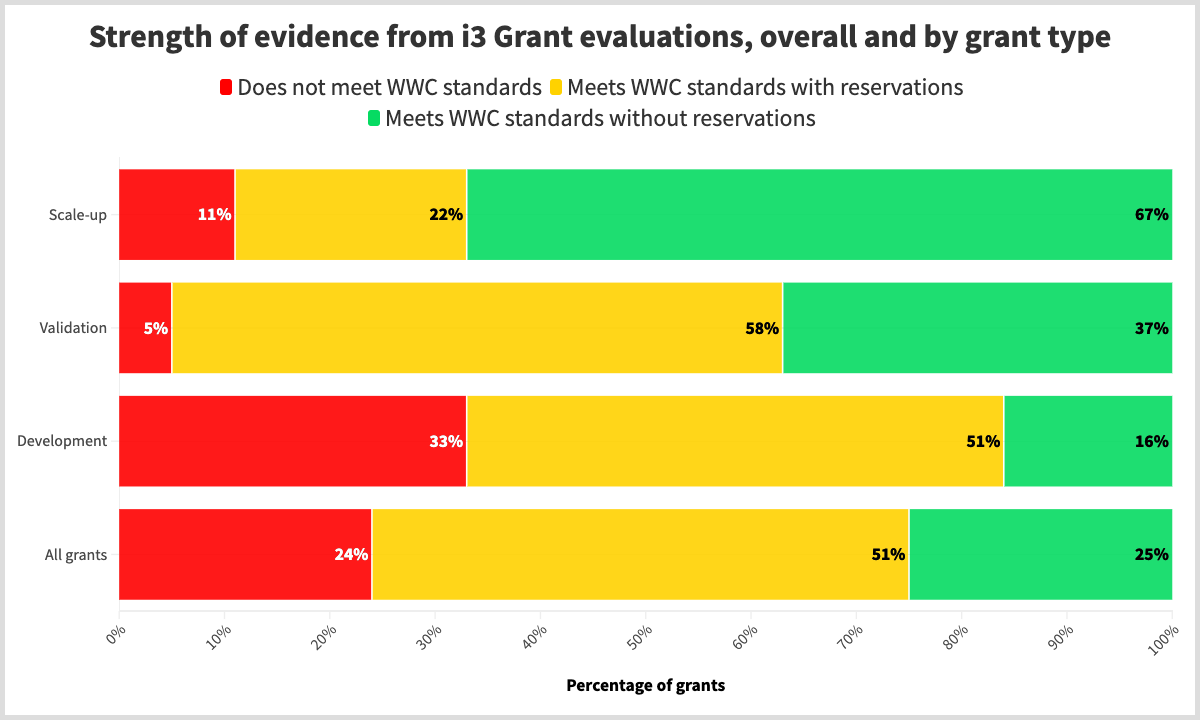Investing in Education R&D Is Essential — and It’s Not Just About Numbers
Dinkes & Boulay: Ed Department report dismissed results from some of its Investing in Innovation grantees. But that's not the whole story.

Get stories like this delivered straight to your inbox. Sign up for The 74 Newsletter
At the heart of a true democracy lies the fundamental belief that all citizens have the right to a quality education. Education enriches individual lives and forms the bedrock of a flourishing society. In America’s current reality, where students exhibit significant achievement gaps by race, ethnicity and socio-economic status and score poorly on national and international math and reading assessments, education research and development is crucial for improving outcomes, addressing inequities, promoting innovation, informing policy and practice, and fostering continuous improvement in education.
In response to the enduring issues facing Americans, 14 years ago, the Obama administration launched six grant programs under the American Recovery and Reinvestment Act of 2009 to stimulate innovation and research in critical areas. Central to these grant programs was the quest to identify effective approaches and scale their implementation to drive meaningful outcomes. The grant program focused on education R&D was the Investing in Innovation (i3) Fund.
Recently, the Department of Education released a summary report on the 148 i3 grants funded between 2010 and 2016 that had completed evaluations. One of the main conclusions was that “only” 26% (39 grants) found at least one statistically positive effect on student achievement. Later, referring to those 39 programs, the report said a “minority of i3 grantees’ educational strategies yielded improved student outcomes.” Verbiage like “only” and “minority” throughout the report suggests that the percentage of i3 evaluations that found a statistically positive effect on student achievement was disappointing and less than the department should have expected.
But numbers lack meaning until they are interpreted and placed in appropriate context. A 26% success rate in education innovation — in a complex field in which breakthroughs are rare and challenges abound — arguably far outpaces those in other industries and federal R&D investments. For example, the success rate in clinical trials for new drugs is just under 8%, and some 85% to 90% of DARPA projects fail to meet their objectives. By those two measures, investment in i3 seems like a very successful federal R&D effort. In a complex field in which breakthroughs are rare and challenges abound, the 26% should be celebrated.
Even the i3 Development grants, under which grantees proposed, implemented and tested new ideas, yielded results that outperformed these two efforts: 15% — 15 programs — had at least one positive impact on student outcomes.
Among programs awarded Validation grants, which fund testing, refining and expanding strategies supported by prior evidence, almost half (48%, or 19) produced positive effects on student outcomes. So did 56% (five) programs of the 11 Scale-up grantees, who were funded to test and document the feasibility of their strategies becoming a national model, appropriate for use with a wide range of student populations and in a wide range of settings.
In total, Congress’s investment in innovative approaches to improving education outcomes yielded 39 evidence-based programs that teachers, schools and districts can choose to use in their schools to address their pressing challenges. Given the complexity of rigorously identifying what works in education, for whom and under what circumstances, identifying 39 evidence-based programs should be hailed as a good start, but not a satisfying end, and certainly not a failure. With millions of K-12 students and thousands of schools, the need for evidence-based solutions remains.
The current version of i3 is called the Education, Innovation and Research program, and 207 grantees are currently working to address lagging student achievement and document impacts. That’s in addition to the 24 i3 grants that had yet to report findings at the time of the summary report. If another 26% of those programs result in positive impacts on student outcomes, the list of effective programs will increase from 39 to 99.
The i3 program has demonstrated its value as a federal investment, and there is a pressing need for Congress to recognize the importance of funding education innovation. By supporting R&D initiatives, policymakers can empower researchers and educators to drive meaningful change and address the complex challenges facing America’s education system.
The success of R&D programs should not be judged solely on numerical outcomes, but on their ability to advance knowledge and foster evidence-based practices. Congress and the Department of Education need to remain steadfast in their commitment to innovation and progress, recognizing that every dollar of investment brings the country closer to unlocking the full potential of its education system. Now is the time to invest in education research, to harness the power of evidence-based strategies and to propel students toward a brighter future.
Get stories like these delivered straight to your inbox. Sign up for The 74 Newsletter

;)

